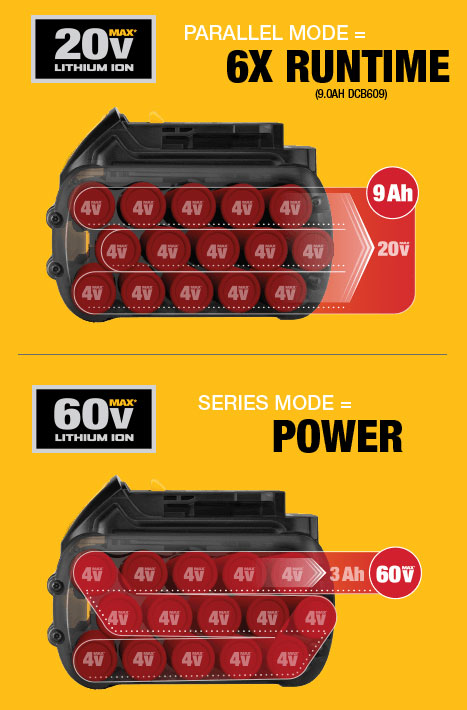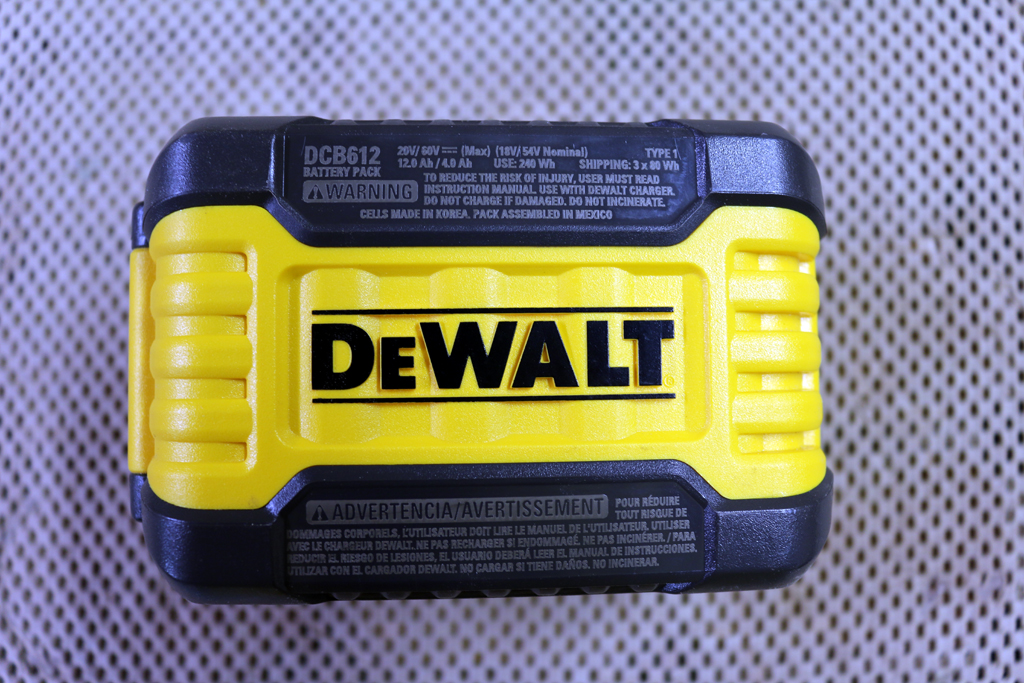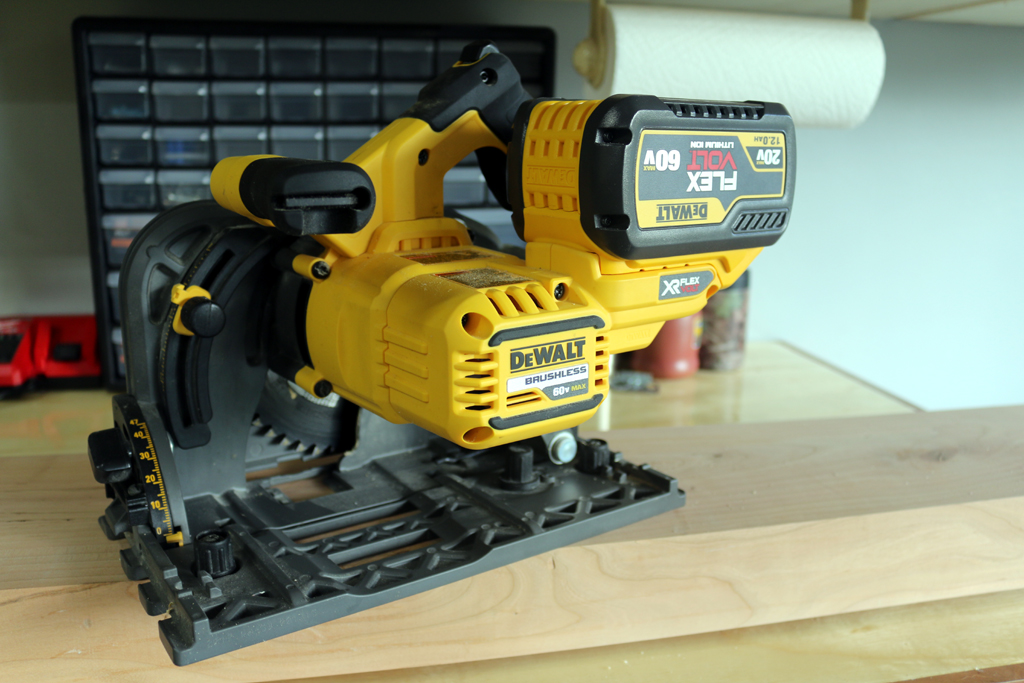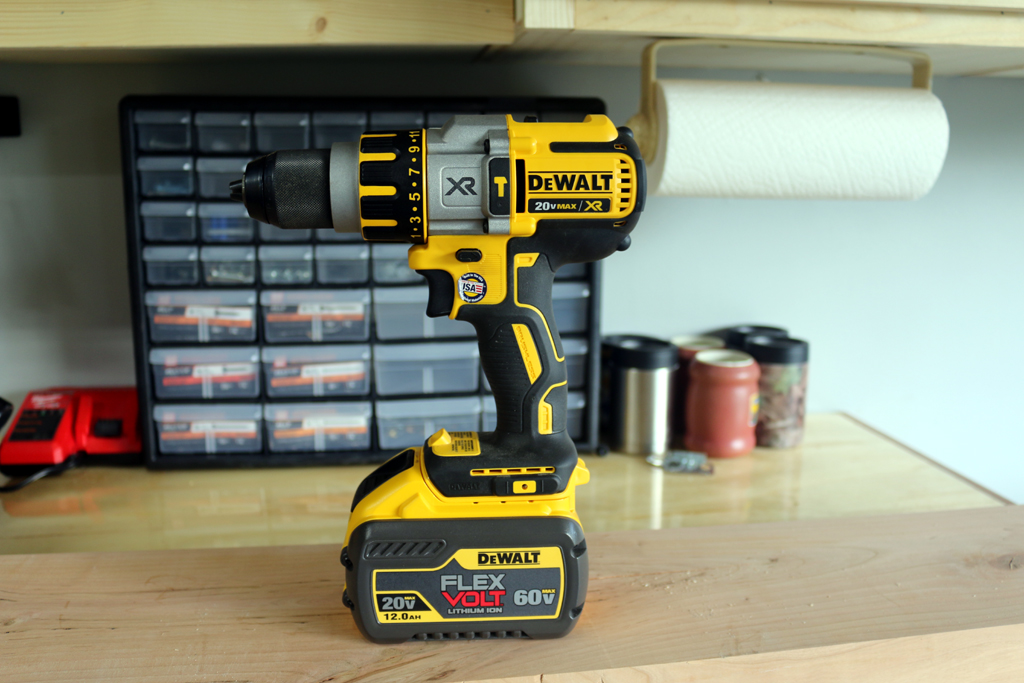The DeWalt FLEXVOLT platform is continuing to grow and become more useful. With the recent introduction of the Flexvolt 12.0 AH battery, DeWalt has increased the runtime on all high demand 20V Max and 60V Max tools. Read on in the DeWalt FLEXVOLT 12.0 Ah Battery Review to find out more.
DeWalt FLEXVOLT 12.0 Ah Battery Review Overview
The Flexvolt battery platform is a relatively new line for DeWalt. It is completely different from what the other tool companies are doing. For those of you who are unfamiliar with the Flexvolt line or just are unsure of how they work, they are very unique. I’ll do my best to explain what makes the batteries so special.
As we all know, the lithium batteries we using in our cordless tools are made up of multiple lithium-ion cells (batteries) stacked up on top of each other in a plastic housing. When you connect these cells together, you get one bigger battery. How you hook them up though, determines the battery’s voltage.
To explain what I mean by “how the cells are hooked up”, I’m going to use the DeWalt Flexvolt 9.0 Ah battery as an example. The battery housing has 3 rows of cells and 5 cells in each row. Since each cell measures 4V, if you connect one row of cells together you will get 20V. The more rows you connect increases the batteries Amp Hours (Ah). When the Flexvolt battery is set up this way, it is considered to be set up in parallel mode.
If instead of just connecting one row of cells and you connect all 15 cells together, the voltage will measure 60V, but the Amp Hours will be divided by 3 since these batteries are now acting like three rows described above, they are now acting as a single row. When the Flexvolt battery is configured like this, it is considered to be set up in series mode.
Now your next question should be, how does the battery know what voltage to be and how to switch between the two? This is where the magic happens. Basically, the tool will determine the battery’s voltage. If the battery is plugged into a 20V Max tool, the electronic communication between the tool and battery will essentially tell it to set up in parallel. If the battery is put into a 60V Max tool, it will automatically be set up in series.
In April of 2018, DeWalt released the largest capacity Flexvolt battery to date. They are calling it the Flexvolt 20V/60V Max 12.0 Ah battery (60 Volts X 4.0 Ah or 20 Volts X 12.0 Ah).
DeWalt FLEXVOLT 12.0 Ah Battery Review Features
The Flexvolt 12.0 Ah battery is 3.8” tall and weighs in at 3.2 pounds. It produces 240 watt-hours.
It has the DeWalt traditional 3 bar LED fuel gauge
DeWalt FLEXVOLT 12.0 Ah Battery Review Performance
The DeWalt Flexvolt 12.0 Ah battery offers up to 50% more runtime than the 6.0 Ah battery that comes standard in most Flexvolt kits and 33% longer than their 9.0 Ah battery.
The biggest benefit this battery has to offer is runtime, especially for their high demand tools such as the Dewalt Flexvolt Table Saw (DCS7485), Dewalt Flexvolt Concrete Saw (DCS690), Dewalt Flexvolt Chainsaw (DCCS670), and the Dewalt Flexvolt SDS Rotary Hammer (DCH733). These tools require so much power that they can quickly deplete smaller batteries.
This battery can be used on 20V Max tools as well, but in my opinion, the extra battery weight the 12.0 Ah battery carries doesn’t justify the longer runtimes in most hand-held tools. There are a few exceptions I can think of like the DeWalt 20V Max chainsaw (DCCS620). As you can see, I have the 12.0 Ah battery mounted on my DeWalt 20V Max Hammer Drill and it looks huge. Sure I should be able to run for a couple days straight without charging using this monster of a battery. My shoulder may give out before the work is done though.
DeWalt FLEXVOLT 12.0 Ah Battery Review Value
I’m a huge fan of increased runtime. If you have entered the Flexvolt line of tools and hate stopping to change batteries, this new 12.0 Ah battery might be a solution to your problem. To give you an idea of the Flexvolt battery prices at this point in time, the 6.0 Ah battery sells for $149.00, the 9.0 Ah battery for $199.00 and the 12.0 Ah for $249.00 at The Home Depot.
DeWalt FLEXVOLT 12.0 Ah Battery Review Final Thoughts
I am a huge fan of the DeWalt Flexvolt line of tools that I own so far (12” Sliding Compound Miter Saw and the Track Saw). They have exceeded all of my expectations. I love not having to deal with a cord when I work out in the driveway or if I take the tools on the road. The only thing that could have made the Flexvolt line better, in my opinion, is longer runtimes. Thankfully, Dewalt covered this with the 12.0 Ah battery. The only question you can ask yourself is it worth the $249 dollar price tag.









“Now your next question should be, how does the battery know what voltage ……electronic communication between the tool and battery will essentially tell it to set up in parallel. If the battery is put into a 60V Max tool, it will automatically be set up in series.”
Magic is mechanical. In back of the battery we have connectors and two small rows. Flexvolt tools has (in the right and left side of battery terminal) two extra pieces of material. They push the main switch all in. If we push the switch all in it connects these 3 groups of 5 cells in series – 60V mode (54V).
20V tools don’t do that so the battery is in 20V (18V) mode – parallel mode.
The safety cap has something to do too. It push the mechanical switch in half way, switch is in idle posision and we have 3 independent and non connected battery’s – transport, plane, shipping.
Sorry for my english.
my dewalt lawn mower requires all 16 of my batteries to mow the front & back yard …
since the lawn mower cost $350.00; i am using 6 ah flex 20 volt batteries
because i can’t afford using $500.00(2-12 ah batteries) for bigger batteries
when the big batteries cost more than the tool.
Nice review, but I’m confused by this critical paragraph:
The DeWalt Flexvolt 12.0 Ah battery offers up to 50% more runtime than the 6.0 Ah battery that comes standard in most Flexvolt kits and 33% longer than their 9.0 Ah battery.
Shouldn’t that be 100% more runtime (ie double the runtime) of the 6.0Ah battery? In theory it should, but in practice sites it?
I’m suspecting a simple maths error here, or is this real life experience showing that we should stay away from the 12Ah battery?